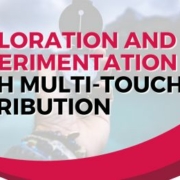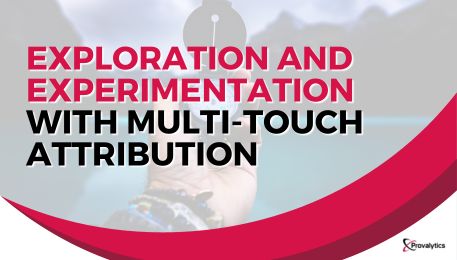Unlocking the Potential of Multi-Touch Attribution in Marketing
In the fast-paced realm of marketing, the significance of Multi-Touch Attribution (MTA) cannot be overstated. For marketers striving to furnish their sales teams with top-tier leads and accounts, MTA is a indispensable tool. In the contemporary competitive landscape, the ability to glean data-driven insights is paramount. MTA provides a comprehensive view of campaign effectiveness at various stages of the marketing funnel, empowering marketers to make informed decisions on resource allocation and optimize return on investment (ROI).
Within the arsenal of B2B marketing analytics tools, the integration of multi-touch attribution stands out as a game-changer. Marketers now have the capability to effortlessly examine their data through various attribution models, gaining insights into the performance of different campaigns. By navigating the influencer model dropdown and the even distribution model, marketers can swiftly assess campaign effectiveness. This feature enables a quick understanding of which campaigns wield the most impact, providing marketers with the information needed to refine and enhance their marketing strategies.

Harnessing the Power of Multi-Touch Attribution for Informed Marketing Choices
Marketers can strategically utilize the first touch model to pinpoint campaigns that drive awareness and initiate new pipelines. Conversely, the last touch model unveils which campaigns contribute to finalizing deals, offering insights into those with the highest ROI. Armed with this information, marketers can optimize resource allocation, ensuring efforts align with the most successful campaigns.
Informed Decision-Making for Business Growth
By identifying the most prosperous campaigns, marketers can make strategic decisions that significantly impact business growth. For instance, if events emerge as the most successful campaigns, marketers can strategically hire an event lead to spearhead executive thought leadership initiatives and orchestrate exclusive events for key accounts. This approach not only supports sales teams but also positions marketers as crucial contributors to business expansion.
Multi-touch attribution emerges as a formidable ally for marketers striving to meet joint pipeline and revenue targets. Armed with data-driven insights, they can strategically allocate resources, foster collaboration with sales teams, and drive tangible business growth. In the competitive landscape of today, embracing multi-touch attribution is not merely an option—it is a requisite for those aiming to stay ahead in the dynamic world of marketing.
How does Multi-Touch Attribution revolutionize B2B marketing analytics?
Within the B2B marketing analytics toolkit, the integration of multi-touch attribution is a game-changer. Marketers can effortlessly examine data through various attribution models, gaining insights into the performance of different campaigns. Navigating the influencer model dropdown and the even distribution model allows swift assessment of campaign effectiveness.
How does Multi-Touch Attribution aid in making informed decisions for business growth?
By identifying the most successful campaigns, marketers can make strategic decisions that significantly impact business growth. For example, if events prove to be the most successful, marketers can hire an event lead to drive executive thought leadership campaigns, fostering business expansion through exclusive events for key accounts.
In the competitive landscape, why is embracing Multi-Touch Attribution considered a requisite for marketers?
Multi-touch attribution emerges as a formidable ally for marketers aiming to meet joint pipeline and revenue targets. Armed with data-driven insights, marketers can strategically allocate resources, collaborate with sales teams, and drive tangible business growth. In the competitive world of marketing, embracing MTA is not merely an option but a necessary step for staying ahead.



















